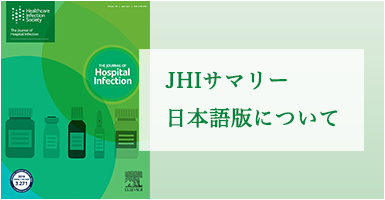抗菌薬残留の検出および水化学組成の評価のためのワークフロー、ならびにメタゲノムシークエンシングのための病院のシンク排水口サンプルの保存★
A workflow for the detection of antibiotic residues, measurement of water chemistry and preservation of hospital sink drain samples for metagenomic sequencing G. Rodger*, K. Chau, P. Aranega-Bou, A. Roohi, G. Moore, K.L. Hopkins, S. Hopkins, A.S. Walker, N. Stoesser *University of Oxford, UK Journal of Hospital Infection (2024)144,128-136
背景
病院のシンクは、医療関連病原体を定着させる環境リザーバである。抗菌薬残留、栄養廃棄物、硬度イオンなどのシンク環境の選択圧が、抗菌薬耐性遺伝子の細菌間交雑を促す可能性があるが、これらの因子を明らかにするための安価で正確なサンプル採取法はない。
目的
ディップスティックを用いて、抗菌薬残留の検出および水化学組成の評価を行うためのワークフローの妥当性を確認すること。副次的に、メタゲノムシークエンシング用のシンク防臭弁のサンプルの分類学的組成および抗菌薬耐性遺伝子(レジストーム)組成を維持するためのホウ酸の有用性を検証すること。
方法
抗菌薬残留のディップスティックは、アンピシリン、ドキシサイクリン、スルファメトキサゾール、シプロフロキサシンの段階希釈に対して検証し、水化学組成のディップスティックは、化学的キャリブレーション標準の段階希釈に対して検証した。ディップスティックの「実環境」でのパイロット評価には、シンク防臭弁の吸引物を使用した。微生物多様性の保存剤としてホウ酸を評価するために、ホウ酸使用と非使用で約 22°C での培養がメタゲノムシークエンシングの出力に及ぼす影響を、2 日目、5 日目にベースライン(0 日目)と比較して検討した。
結果
各抗菌薬の検出限界は、3 μg/L(アンピシリン)、10 μg/L(ドキシサイクリン)、20 μg/L (スルファメトキサゾール)、8 μg/L(シプロフロキサシン)であった。最良の成績を示した水化学組成のディップスティックは、濃度依存的に標準濃度の 34/40(85%)を正確に示した。防臭弁の 1 サンプルでは、テトラサイクリン系およびスルホンアミド系の存在が陽性であった。分類学的組成およびレジストーム組成は、ホウ酸を用いて約 22°C で最長 5 日間保存した後もほとんど維持された。
結論
シンク防臭弁のサンプルの抗菌薬残留を検出し、水化学組成を明らかにするためにディップスティックが使用できる。ホウ酸は防臭弁のサンプル組成の有効な保存剤であり、低温流通輸送に代わる低コストの手段となる。
監訳者コメント:
特になし
同カテゴリの記事
Vermamoeba vermiformis resides in water-based Heater-cooler units and can enhance Mycobacterium chimaera survival after chlorine exposure M.J. Sarink*, W.A. van Cappellen, A.G.M. Tielens, A. Van Dijk, A.J.J.C. Bogers, J.E.M. de Steenwinkel, M.C. Vos, J.A. Severin, J.J. van Hellemond *Erasmus MC University Medical Center Rotterdam, The Netherlands Journal of Hospital Infection (2023) 132, 73-77
An in vitro investigation into the release of fugitive medical aerosols into the environment during manual ventilation
M. Mac Giolla Eain*, M. Joyce, A. O’Sullivan, J.A. McGrath, R. MacLoughlin
*Aerogen, IDA Business Park, Ireland
Journal of Hospital Infection (2021) 108, 135-141
PreciSSIon: a collaborative initiative to reduce surgical site infections after elective colorectal surgery B. Clayphan*, L. Dixon, S. Biggs, L. Jordan, A. Pullyblank, PreciSSIon Collaborators *Great Western Hospitals NHS Foundation Trust, UK Journal of Hospital Infection (2022) 130, 131-137
Strategies to improve the implementation of infection control link nurse programmes in acute-care hospitals M. Dekker*, I.P. Jongerden, M.C. de Bruijne, J.G.M. Jelsma, C.M.J.E. Vandenbroucke-Grauls, R. van Mansfeld *Vrije Universiteit Amsterdam, The Netherlands Journal of Hospital Infection (2022) 128, 54-63
Transmission of Staphylococcus aureus in the anaesthesia work area has greater risk of association with development of surgical site infection when resistant to the prophylactic antibiotic administered for surgery R.W. Loftus*, F. Dexter, J.R. Brown *University of Iowa, USA Journal of Hospital Infection (2023) 134, 121-128



